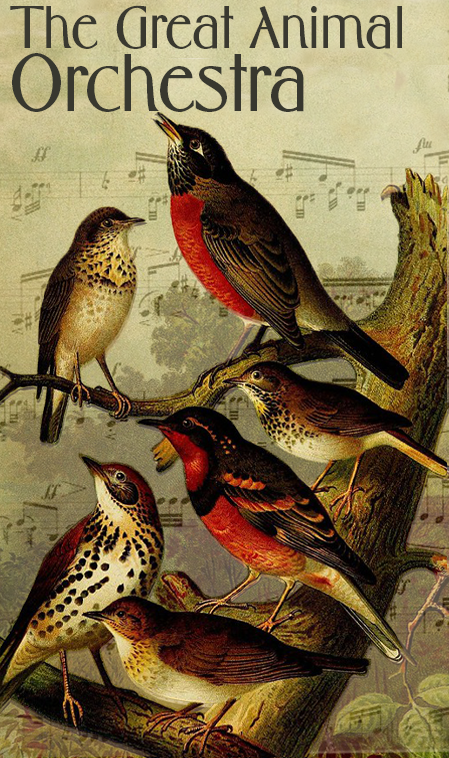
By Amanda Woolsey
Project Description
“The abyss is Time, with its sadness and weariness. The birds are the opposite of time. They represent our longing for light, for stars, for rainbows, and for jubilant song!”
-Olivier Messiaen
In the Hans Christian Anderson fairy tale, “The Nightengale”, the sweet warbling of the songbird enchants an emperor and wards off death with the power of its song. Bird song has inspired musicians and composers for as long as humans have been alive and music has been created. Despite this legacy of inspiration, there is a deeply unromantic exlusion of bird song from the categorization of music, which is largely delineated as a distinctly human phenomenon. Recent research, however, has found that hermit thrush songs follow the same mathematical rules that underlie human musical scales, largely favoring frequency ratios from the overtone series. The Great Animal Orchestra seeks to challenge the human-dominated rhetoric of musicality and bridge the gap between human and avian song cultures. By creating a playable instrument based on harmonic hermit thrush song notation, this project aims to both create a musical symbiosis between human and non-human actors and promote the Messiaen philosophy of birds as the world’s first musicians.
Bio
Tokyo-born and Beijing-raised, Amanda Woolsey is a multidisciplinary artist, naturalist, and aspiring zoo-musicologist currently based in Astoria, Queens. Amanda holds a BS in Environmental Science from SUNY College of Environmental Science and Forestry, and is a current Data Analysis and Visualization master’s student at CUNY The Graduate Center. She has worked extensively in the fields of avian migration and songbird behavioral ecology; collaborating with international research institutions including Beijing Normal University, University of Groningen, and Hawk Mountain Sanctuary. Deeply inspired by both her multicultural upbringing and past work as a research ornithologist, Amanda works to utilize digital media as an effective means of data-driven wildlife conservation advocacy.